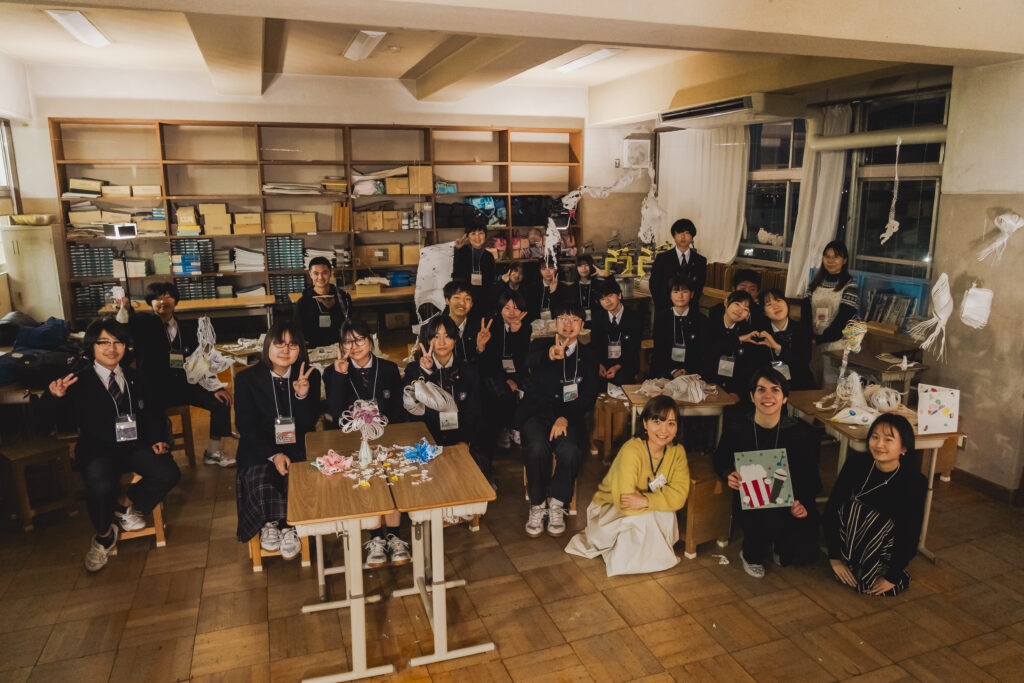Report on the “Art Education Program” for students to reflect on themselves in a multicultural environment
Text=Minori Terayama(Immigration Museum Tokyo Student Staff)
Implementation of junior high schools
In fiscal year 2023, the third year of the Art Education Program at elementary schools in Adachi Ward, we expanded the program to include junior high schools.
In implementing the program at junior high schools, we aimed:
・to create an environment in which artists and students can interact more mutually and proactively,
・to create opportunities for students to independently think about “a multicultural and symbiotic society,
・to create opportunities for students to think about themselves in relation to others.
The program was designed with these three points in mind.
This concept of a program that emphasizes independence was something we wanted to address at the junior high school level after having implemented the program at the elementary school level up to now. From the surveys conducted after the previous year’s program and from the staff’s own reflections, there was a desire to create more time for the artists and IMM Tokyo staff to slowly communicate with the students. In addition, we wanted to create a space where the students could interpret the program from their own perspectives and co-create with the IMM Tokyo staff, as they are also the program participants, instead of always being on the receiving end of programs provided by IMM Tokyo. This relationship with junior high school students broadens their perspectives on how to think about things. From these perspectives, we attempted to create a one-month medium-term program in which the IMM Tokyo would visit the junior high school more frequently and build relationships with each student, in contrast to the short-term program at the elementary school.
The artist was Chloe Pare, a Greek who had worked with us in the previous year’s elementary school program. Two members of IMM Tokyo participated in the program as well. We visited the art club once a week for a total of four times over the course of a month.
In the program named, “fantastic fields,” each student was given an original kit with a laser cutter that was decorated with a pattern resembling a mineral. Through discussion, the students were able to connect to the characteristics of minerals and create artwork while thinking about themselves, the people around them, the environment around them, and the future.
Implementation
Day 1: igneous rocks – looking at ourselves
The chime after school signaled the arrival of the students in the art room. They sat around the desks spread out in an “L” shape, and one by one, they introduced themselves by hanging their handmade nameplates, which each student had made in advance, on their chests. While some of them looked a little nervous, they were able to tell us a little bit about themselves in English. After Chloe’s self-introduction, we immediately handed out the original kits required for the program. The students were very interested in the beautiful and delicate kits, which were made of small, shiny paper with fine cutouts.
As an introduction, Chloe explained the four-day program using presentation slides. The students listened intently as she introduced the activities that were about to begin, using various installation works as examples.
The first theme mineral was igneous rock. Igneous rocks are minerals crystallized from magma generated underground, in the lower part of the earth’s crust, and in the upper mantle by intense heat as the magma cools. We thought about ourselves in the context of this formation. With paper in their kits resembling igneous rocks in hand, the students talked with their friends while cutting and pasting the paper and decorating it with various colors, transforming it into various shapes and colors.
At the end of the day’s program, each of them introduced what they had made. Some students drew their favorite things on each of the flecks of igneous rock, while others drew animals and plants that reminded them of themselves.
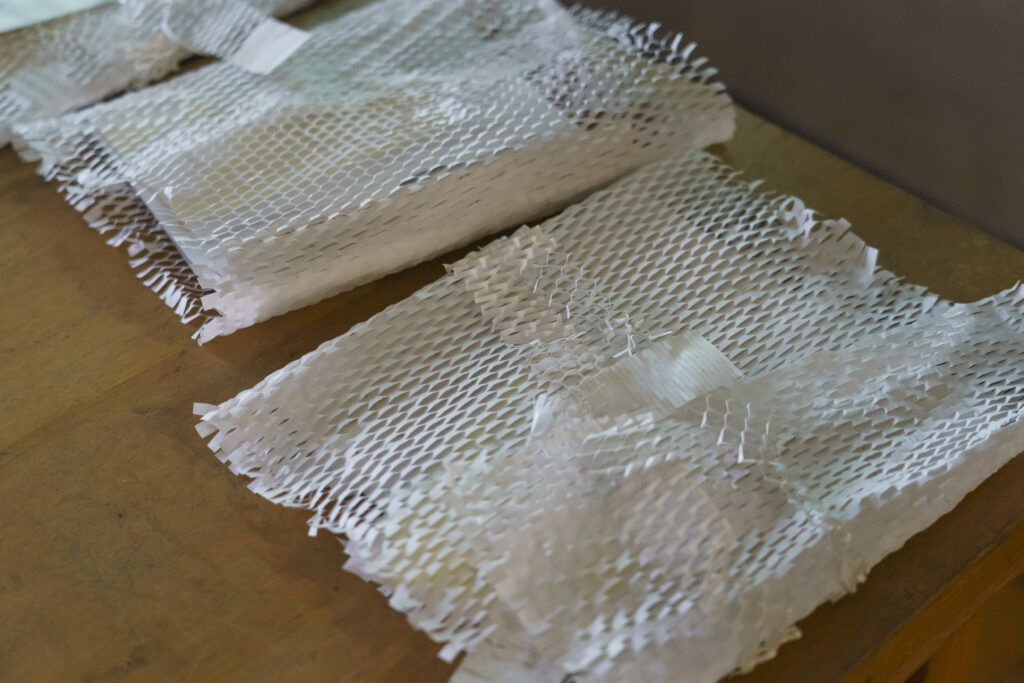
Original kit distributed (photo by Ryohei Tomita)
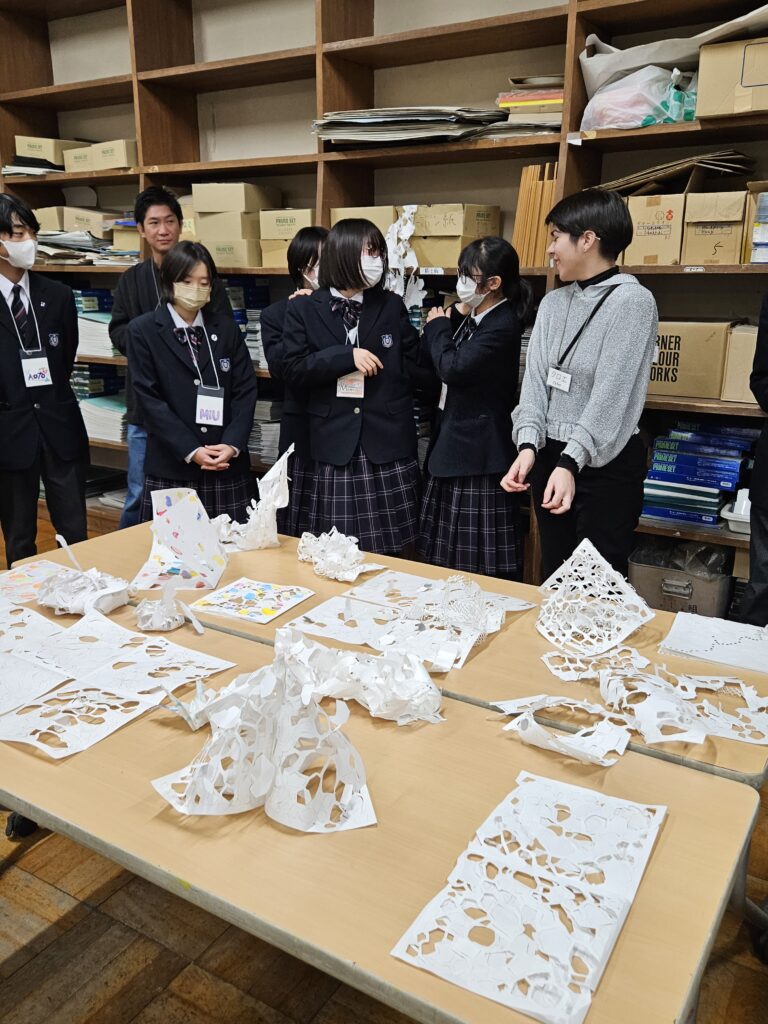
Students presenting each other’s work (courtesy of the Otomachi Office)
Day2: Sedimentary Rocks – Considering the Connection to the Environment
With the atmosphere a little more relaxed than last time, the second activity started after a week.
The theme mineral for the day was sedimentary rock, which are formed from existing rocks and fragments of once-living organisms. Like sedimentary rocks, which are formed by various external factors, we are also influenced by the environment around us. While thinking about the environment in which they live, the students’ hands were moving forward at a faster pace than in the previous session. Many students talked about their own families, the buildings in their neighborhoods, and the people who live on the bottom of the rocks. Perhaps through these conversations, there were scenes of collaboration between the different works. Furthermore, from this time on, Chloe joined the circle and went around the desks of each student to communicate with them. The day went by quickly, and as in the previous session, when the students presented and explained their creations, they seemed to experience the joy of sharing their ideas and how they expressed themselves based on those ideas.
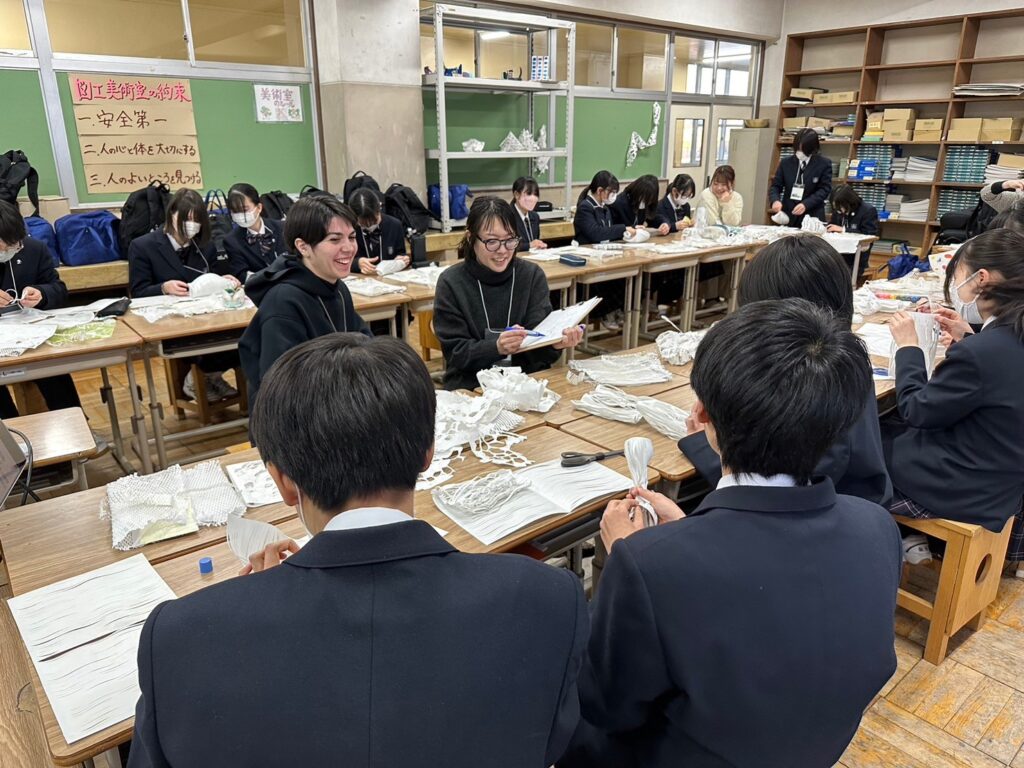
Chloe and a student talking (courtesy of the Otomachi Office)
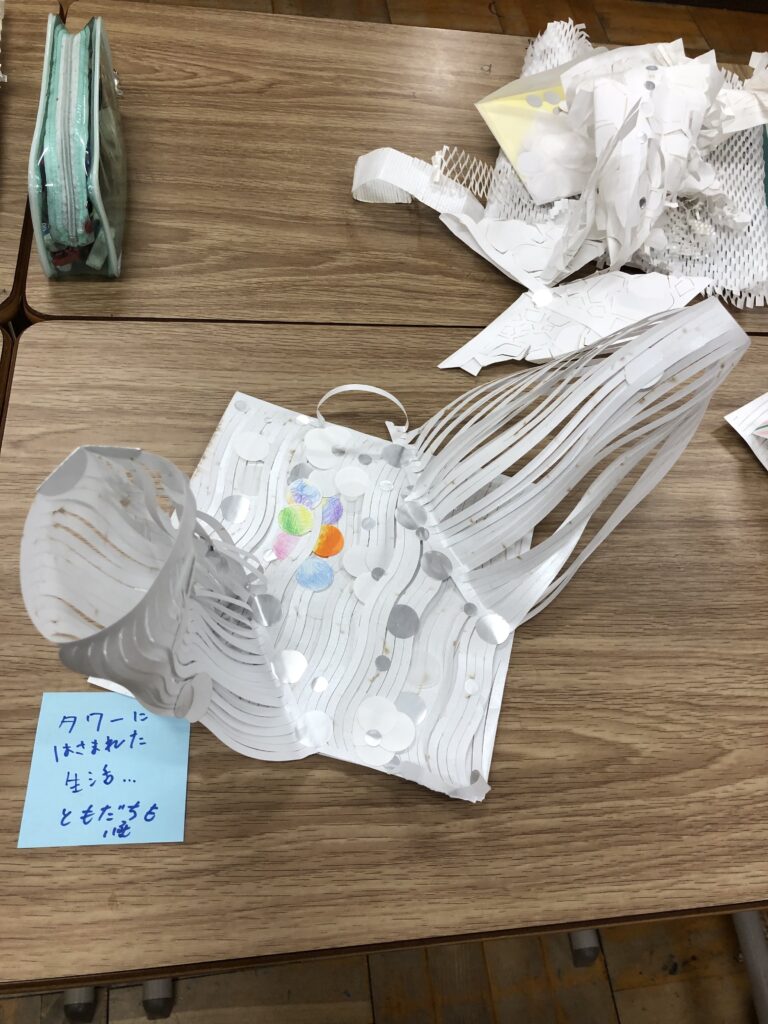
Works created by students (courtesy of the Otomachi office)
Day 3: Metamorphic Rocks – Imagining the Future
In the third session, the students thought about their own future, overlaying the theme on metamorphic rocks, which start as a certain type of rock and gradually change into a new type of rock through pressure, heat, and time. The theme for the day was something that the students wanted to spend more time thinking about than the previous two sessions. I could see them slowly stopping and thinking seriously, “What kind of person do I want to become?” and “What kind of person do I want to be?” Some of the students sometimes expressed their anxiety about the future, but others were also working with sparkling expressions as they imagined their ideal selves and bright futures. During the time when the students presented their works to each other, some of them expressed their hopes for the future, while others focused on the changes in the environment in which they live. Some of the works were conscious of the connection with the works they had created in the previous two activities. One of the students had chosen to focus on a supermarket located near the school, and this work inspired some of the students to take a tour to the actual supermarket after the program. Along the way, we saw a side of the students outside of school and felt our relationship grew deeper.

Chloe and a student talking (courtesy of the Otomachi Office)
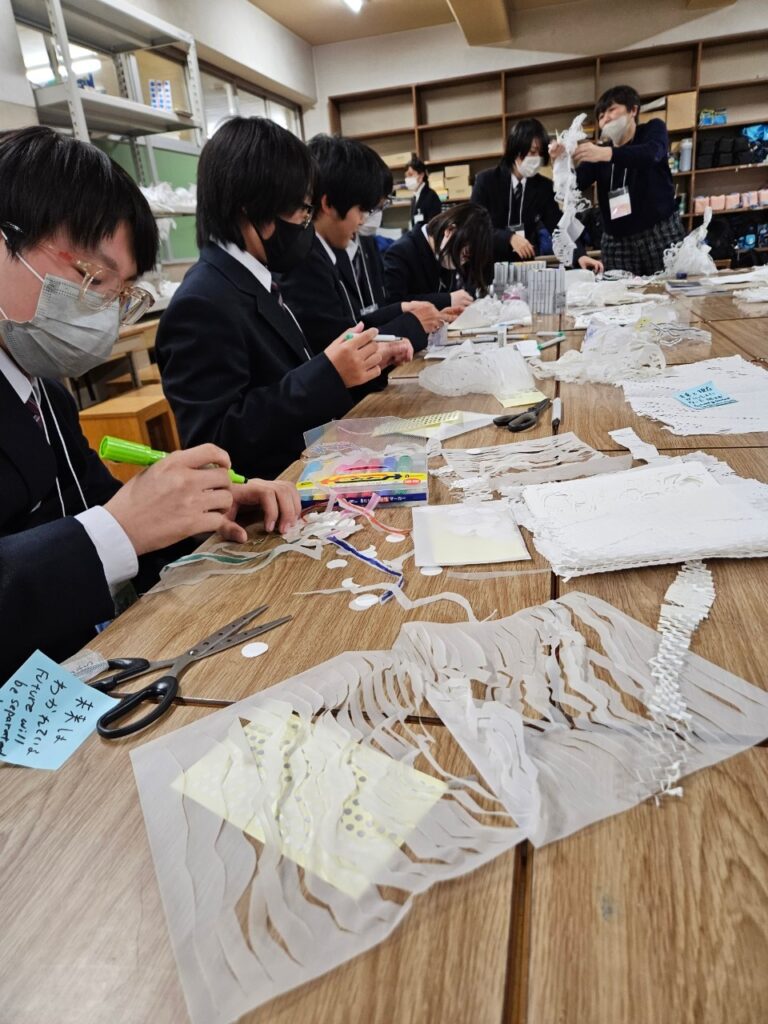
Students creating(courtesy of the Otomachi Office)
Day 4: Fantastic Field – Making a Map of Us
On this final day of the program, participants brought all the artworks they had created over the previous three sessions and displayed them in the classroom. The students were conscious of the connection between the self, the environment, and the future, as they connected their own artworks to each other, and some of them gathered together with their friends to display their artworks in an ingenious way. The light from the outside shining into the shaded classroom after sunset illuminated the works of art scattered throughout the classroom, creating a fantastic field.
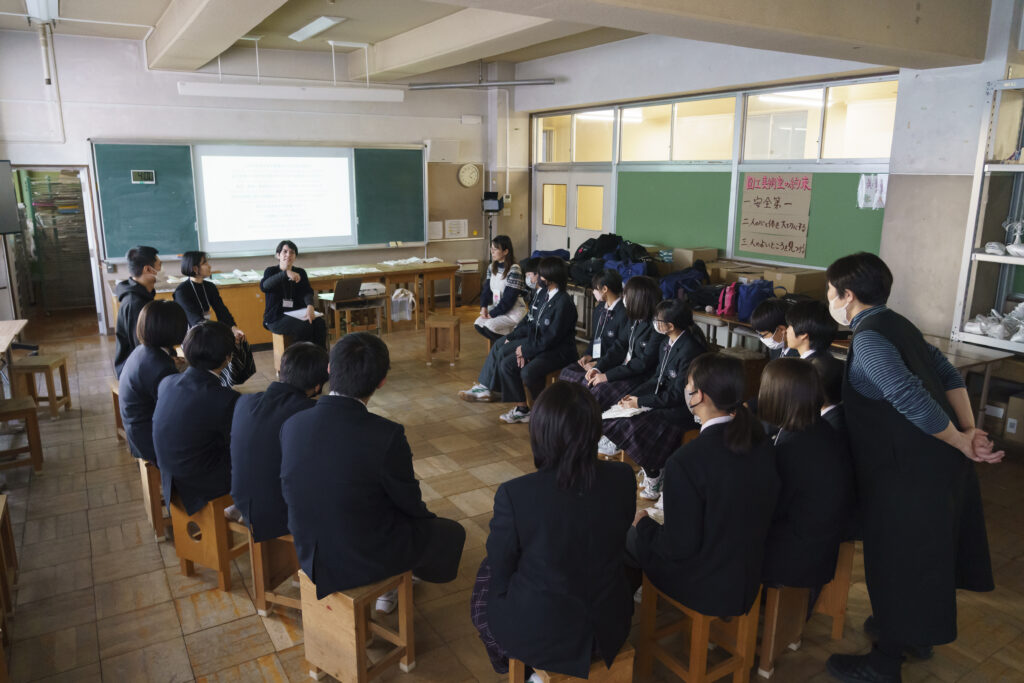
Time for introduction to the fantastic field by Chloe (photo by Ryohei Tomita)
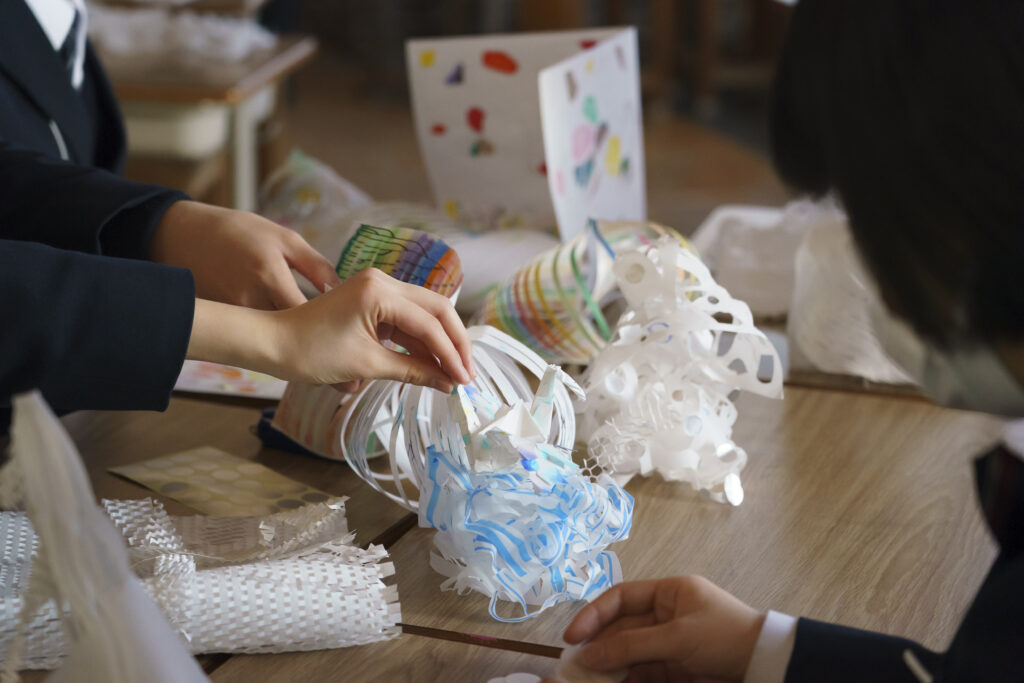
Students discussing and creating the product. (photo by Ryohei Tomita)
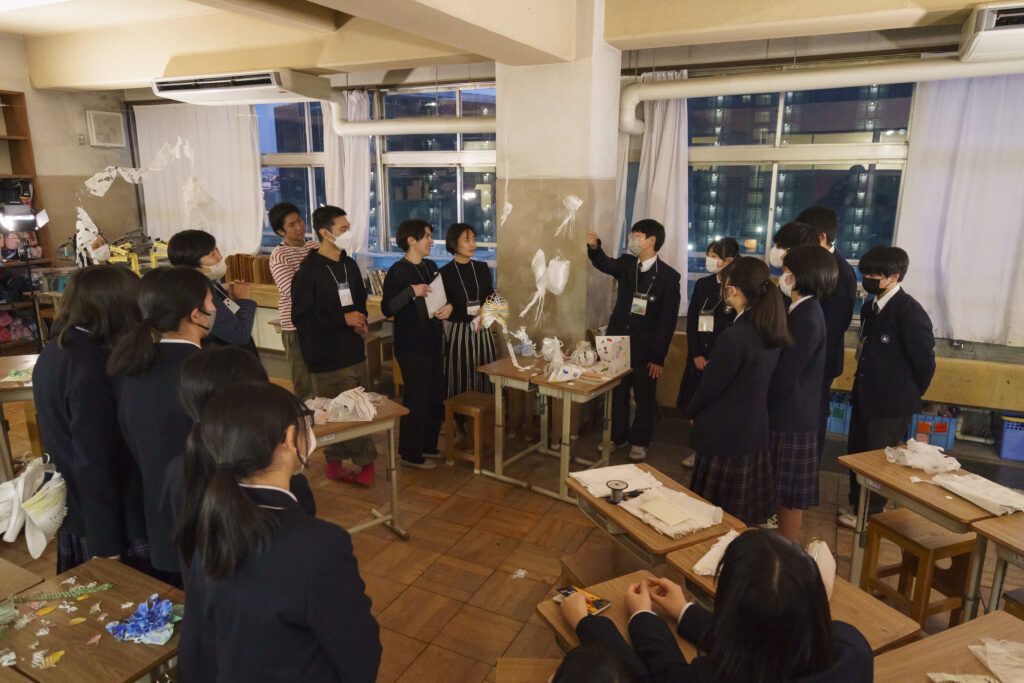
Introducing the works they created together (photo by Ryohei Tomita)
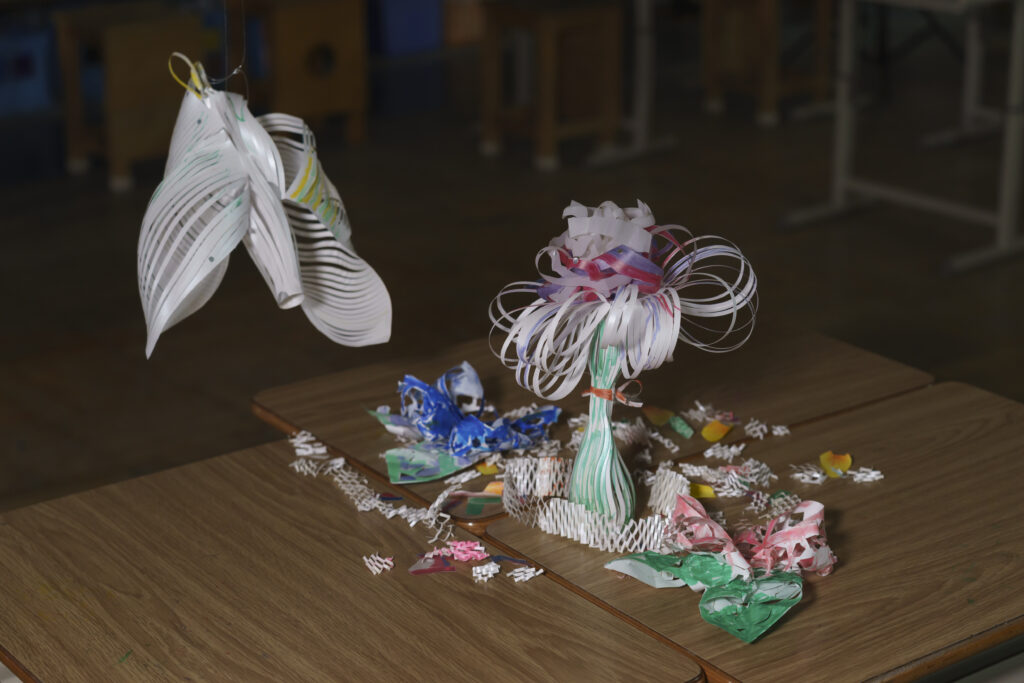
Group of works created by students together (photo by Ryohei Tomita)
Summary
It was the first year of the junior high school program, so we had to go through a process of trial and error to create a program that would make junior high school students think, “I want to do this!”. The themes covered in the workshops were a bit more difficult than those for elementary school students and required more knowledge, so together with the artist Chloe, we thought about how to communicate them and how to make the students understand the sequence of events from thinking to creating. I was very happy that we could gradually get to know each other better as the sessions went on, and we were able to have private conversations and talk about things that were a little more in-depth. We also created an atmosphere in the classrooms by communicating with the students, for example, by turning off the lights even in the dark of the evening.
In the questionnaire we asked the students to answer after the event, many of them said, “It was fun to make the creations while working together with my friends.”and
“I would like to be able to communicate in English with Chloe more actively.” We were very happy to hear that many students were eager to communicate with each other, such as wanting to be able to communicate in their own words.
In addition, at the interviews after we held the program,the teacher said that they could see each student had found a way to open up to their own issues. We are very grateful to the teachers who worked together with us to see the program through, and we are very pleased to see the changes in the children as seen by the teachers who are in contact with the children on a daily basis.
I sincerely hope that through this program, students will be able to meet people they would not normally meet at school, and that they will be able to encounter new aspects of someone else or themselves, and that these encounters will lead to various fantastic futures.
